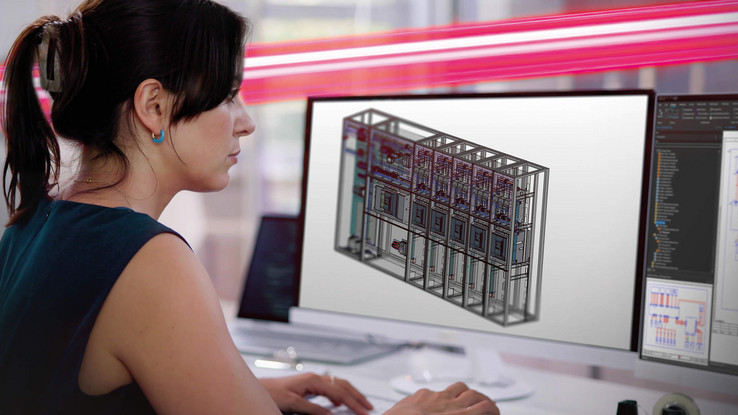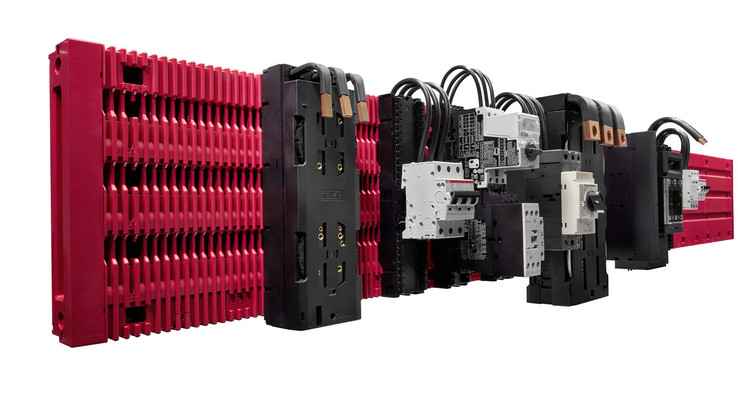How EPLAN is taking switchgear system manufacturing to the next level
Nuremberg/Monheim, Germany, 2024-11-12
In order for the energy transition to succeed, much more speed is required. Therefore customised solutions that simplify and accelerate the value chain for plant system engineering are of the essence. At the SPS in Nuremberg, Germany, EPLAN will be presenting an exemplary end-to-end workflow for the planning and manufacturing of switchgear systems – meaning current-carrying and switching components for the control and distribution of electrical energy. The EPLAN Platform also offers the potential to significantly improve efficiencies in engineering in this important field of the energy industry.
As is the case for control technology and automation, EPLAN offers integrated, end-to-end solutions for switchgear system engineering with which users and their suppliers can considerably increase the efficiency of the process. EPLAN will also be presenting corresponding solutions at the SPS because they are currently in high demand. There will be a special focus on components for grid infrastructure, including substations, transformer stations, charging infrastructure and the field of building automation.
Rethinking things in the energy sector is called for
EPLAN Vertical Market Manager Energy Jan-Oliver Kammesheidt explains: “A rethink is currently underway in this sector. Previously, systems for the power grid have been planned individually and manufactured using processes that are similar to those in factories. With the large number of systems that must be converted and newly built for the energy system transformation, these engineering and manufacturing methods are no longer appropriate. The energy transition won’t happen this way. Stakeholders have realised that they can learn from the machine engineering sector, where switchgear system engineering is often already industrialised and automated. We offer the tools and the platform to make this happen.”
Easily planned and manufactured copper components
An example of one of these tools is the Copper Module for EPLAN Pro Panel, which considerably simplifies the 3D planning of power distribution systems. It is suitable for the design and production of switchgear systems for low-voltage and medium-voltage systems and is used by leading European manufacturers of distribution and transformer stations. Using it, planners can place copper rails in control cabinets, define precise layouts and wire routing, and thereby optimally use the available space in the control cabinets. If desired, the system can also automatically place drill holes and calculate bending radii. This data can additionally be directly transferred to machines from the Rittal Automation Systems portfolio for the mechanical processing of copper rails. Attendees at the SPS can look forward to a number of innovations being presented.
What also makes complete sense, right from the start of switchgear system planning, is the use of RiLineX from Rittal, the new, open platform system for the efficient planning and quick assembly of 60-mm busbar systems. Initial system data has already been saved in EPLAN Pro Panel. What’s more, climate control systems are also a decisive factor for the high power density in the control cabinet. If users take advantage of the RiTherm software, they can use the data from EPLAN and integrate the cooling requirements into the end-to-end planning process.
Production included in the process
If the entire planning process is integrated and occurs in 3D, planners don’t just save time on their own work, they also save time in communication and for exchanging data with suppliers and in-house production teams. They can then also have a detailed visualisation of the planning results, with accuracy in all dimensions, and coordinate directly with clients. In addition, planning in 3D creates the prerequisites for automation and the use of assistance functions in production. This applies to both mechanical processing, for instance during enclosure production, and also for assembling the switchgear system (EPLAN Smart Mounting) and the subsequent wiring (EPLAN Smart Wiring).
What may be considered nice to have for control cabinet engineering makes a significant contribution to safety during maintenance/servicing for switchgear systems, particularly for medium-voltage systems: a virtual view into the enclosure with the AR Augmented Reality functionality in EPLAN eView. The technician scans a QR code on the outside of the switchgear system and can look inside at the digital image of the system without having to open the door. Numerous actual and digital examples at the trade fair booth will provide examples of this in real-world scenarios.
Development continues
A look into the (near) future of switchgear system engineering: the upcoming version of the EPLAN Platform will also allow the exchange of planning data in the IFC format (Industry Foundation Classes), which is commonly used in building services engineering. As one example, planners will be able to import the weight and dimensions of switchgear systems into the building model and thereby take data consistency yet another step forward, even beyond EPLAN.
With these functions, modules and software components, EPLAN is providing impetus for the acceleration and industrialisation of switchgear system construction – and is presenting it all live at the SPS in Nuremberg.





